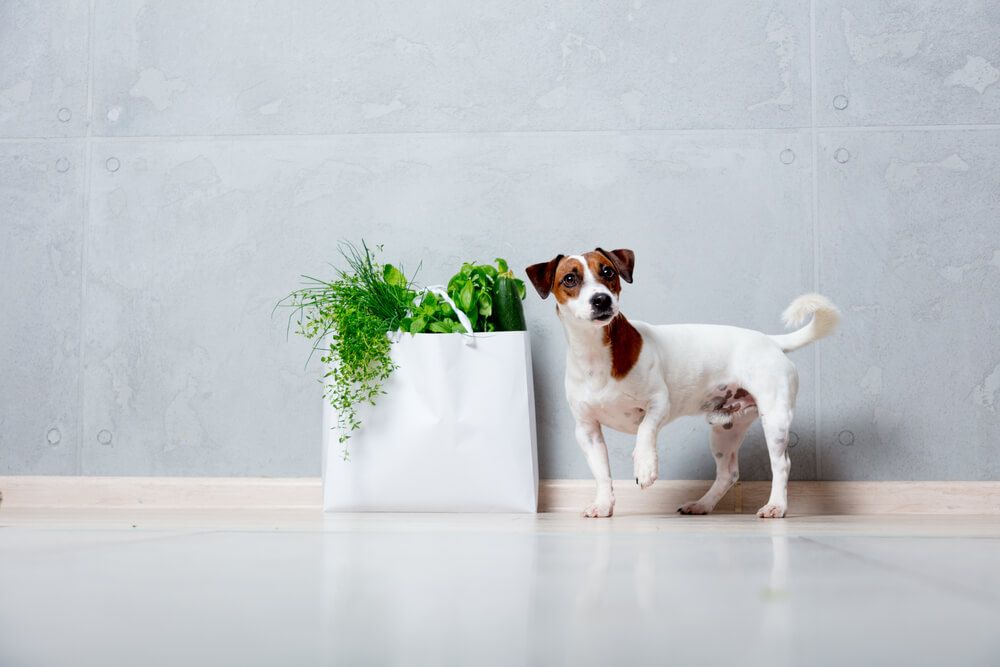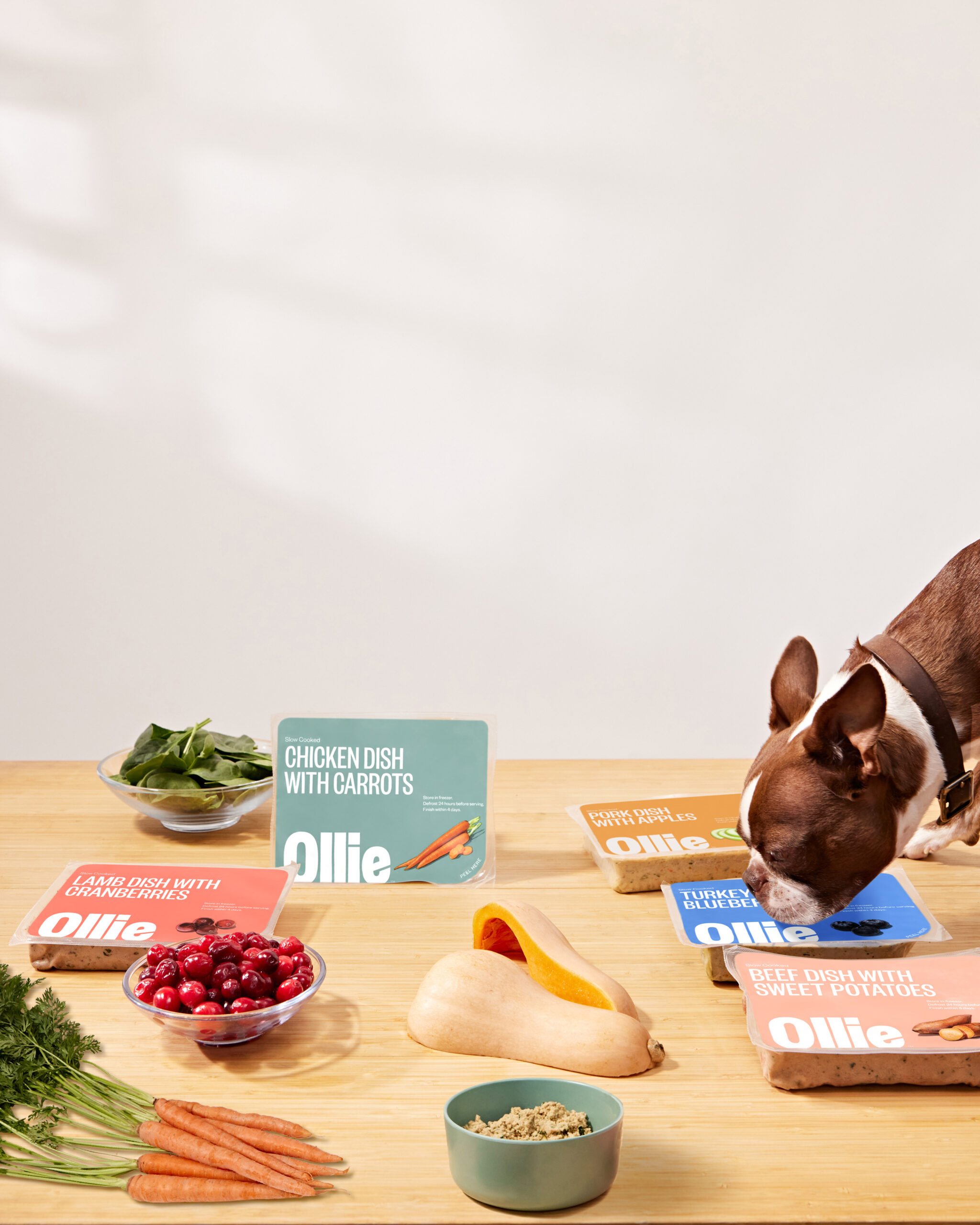Hey Ollie blog readers! We’re offering you an exclusive 60% OFF your starter box! Try now!
Garlic. It’s a polarizing food. Some people love garlic and can’t get enough yet others can’t stand it. However you feel about it, garlic is a staple in many culture’s cuisines and there are many savory recipes that call for at least a little. Most homes always have some fresh garlic, or shelf-stable garlic granules or garlic salts, some brands of olive oil are even flavored or infused with garlic and herbs for convenience and a delicious flavor boost.
Many people also use garlic as a medicine. It can help with everything from lowering blood pressure to fighting off the common cold. What about giving it to your dog? Can garlic be used to treat common ailments in your pup? We asked the experts for their opinions and learned that not everyone supports a liberal use of garlic in dogs. Read on to learn about the pros, cons and how to administer garlic safely.
Is garlic toxic or healthy?
Garlic is a type of allium. This family of plants includes onions, chives, leeks, and shallots. These are all things we are taught not to share with our dogs.
According to the Merck Veterinary Manual, garlic and other members of the allium family, including onions, contain thiosulfate, which is toxic to dogs but not to humans.
Thiosulfate causes oxidative damage to red blood cells, resulting in hemolytic anemia. Symptoms of anemia include pale mucous membranes, rapid breathing, lethargy, weakness, jaundice, and dark-colored urine. Garlic toxicity also causes symptoms of gastrointestinal upset, including vomiting, diarrhea, loss of appetite, abdominal pain, depression, and dehydration.
Per an NIH Study, “Garlic (Allium sativum) is considered to be less toxic than onion and safe for dogs when used in moderation . Allicin and ajoene, pharmacologically active agents in garlic, are potent cardiac and smooth muscle relaxants, vasodilators, and hypotensive agents.”
So while garlic doesn’t exactly get rave reviews as a health food, it can be safe in moderation. New studies are being conducted around using garlic in dogs. Some of the controversies come from a study that was conducted feeding dogs an excessive amount of garlic. In this study, a 40-pound dog was fed 20 cloves of garlic. That is probably enough garlic to make anyone not feel so great!

Ways garlic can help your dog:
-
- There are some reported benefits to feeding garlic to your dog, these include:
- Widening blood vessels
Garlic is known to act as a vasodilator, this means it helps widen blood vessels in your dog. This can be helpful with dogs who have heart conditions or congestive heart failure. These are serious medical conditions that will require more than just garlic. Consult your veterinarian and ask for a referral to a cardiologist if your pup has serious heart issues.
- Flea and tick prevention
Garlic is often fed to dogs to prevent fleas and ticks. The sulfur in the garlic comes through the dog’s skin to repel these pesky insects. Garlic can be an alternative to some of the harsher medication in prescription monthly preventatives, but you should consult your vet before stopping any prescribed medication. The ASPCA says this is a myth, but also that it will take 11 cloves of garlic for a 30-pound dog to get sick. This one is definitely a hot topic and further research may be needed to determine how effective garlic is for preventing fleas and ticks.
- Deworming
Garlic has antiseptic, antifungal, and antimicrobial properties. This makes it a good option for deworming a sick dog. Before relying on garlic for this purpose consult your vet. They will be able to diagnose the specific typeof worm your dog has and help you treat it thoroughly.
When to avoid feeding garlic to your dog:
-
- While in most cases garlic in moderation is not toxic, there are still some situations where it is very important to avoid giving garlic to your dog.
- To puppies
Puppies cannot have garlic as they do not produce new red blood cells until they are at least 8 weeks old. You should avoid feeding garlic to puppies under 6 months of age. It should go without saying, but consult your vet before giving your puppy garlic, especially when they are this young.
- Pregnant or nursing dogs
If your dog is pregnant or nursing, consult your vet before giving garlic or any other herb or supplement. A holistic vet is probably the best person to weigh in on this as they have experience treating animals with conventional medicine as well as herbs and supplements. Garlic can change the flavor of breast milk and can be passed to the puppies through mom’s milk so avoid garlic in nursing moms.
- Specific breeds of dogs
In an article for Dogs Naturally, Veterinary herbalist Susan Wynn warns against giving garlic to Akitas and Shiba Inus. These breeds are more sensitive to the hemolytic effects of oxidants such as N-propyl disulfide found in garlic. She advises dog owners to consult (your) holistic vet if you have concerns about your dog’s breed-related risks.
How to prepare garlic for your dog
If you are going to give your dog some garlic as a health boost you might be curious about how to prepare and serve it. First, always use fresh, organic (when possible) garlic. Peel the garlic and mince, chop or crush it up. You will want to let it sit for 10 minutes after you peel it, but not too much longer! The active compounds in the garlic aren’t active for long. Do not use the jarred crushed garlic you find in your local supermarket, this will not provide any health benefit to your dog. It also may have additional preservatives to keep it shelf-stable, these are not necessary for your dog.
Using a level measuring spoon, feed the following amount per day, according to your dog’s weight. We chose to share these recommendations in teaspoons instead of cloves as clove size can vary widely. There are also many types of garlic to consider and some can have very large cloves. For the sake of consistency use this recommended dosing but consult an expert about offering garlic to your specific pet.
- 5lbs: 1/6 tsp
- 10lbs: 1/3tsp
- 15 lbs: 1/2 tsp
- 20lbs: 2/3 tsp
- 30 lbs: 1 tsp
If you are interested in trying garlic with your dog, start slowly and work up to the recommended dose. If you can’t use fresh garlic and can’t let it sit for 10 minutes before feeding, you also may want to look for an alternative. If your dog does not like the taste of garlic consider adding the garlic to bone broth or some fresh food like Ollie. The flavor will be a little muted. If you’ve ever tasted raw garlic, you know it can be a bit of an acquired taste. Don’t be surprised if your dog doesn’t think it is absolutely delicious. Another benefit of starting really slow when feeding your pup garlic is that your dog can get used to the taste gradually. If you are mixing the garlic into their food, the subtle flavor getting stronger over a period of 7-10 days might be more palatable then just adding large amounts of garlic from the get-go.
Like many “natural” things including salt, water, or even some plants, garlic in very large doses can make your dog sick. If your dog is showing any signs of illness or gastrointestinal distress after eating garlic, you need to discontinue use and consult your vet immediately.
Tagged As:

The nutrition your dog needs,
the food they want.

Enjoying our articles? Subscribe our Newsletters and get new articles directly to your inbox
You might also like
4 June 2025
7 MINS READ
Feed Their Future: Why Human-Grade Food Matters for Puppies
Among the many decisions you’ll make as a new pet parent, choosing the right food for your growing puppy is one of the most important. The quality of your puppy’s diet can impact their developme…
by Ollie Pets
4 June 2025
6 MINS READ
How Does Fresh Dog Food Compare to Homemade?
As pet parents become more conscious about what goes into their dog’s food bowl, many are considering alternatives to traditional kibble. Two increasingly popular options are fresh dog food and ho…
by Ollie Pets
4 June 2025
5 MINS READ
How Can Fresh Dog Food Help with Weight Management?
Maintaining a healthy weight is one of the most important aspects of your dog’s overall health and longevity. Being overweight or underweight can result in health complications and conditions that…








